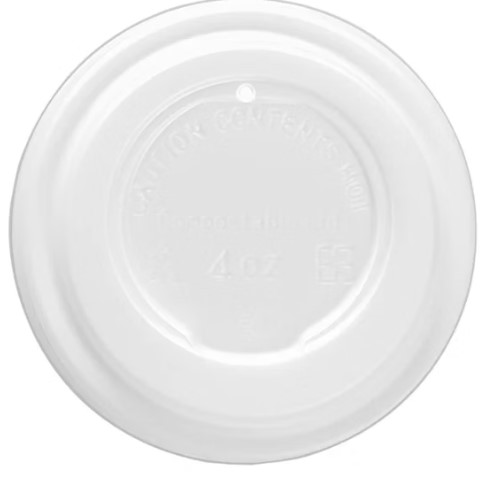In recent years, the demand for eco-friendly alternatives in the foodservice industry has soared, as consumers become more conscientious about the environmental impact of their daily habits. Hot drink cups, in particular, have been a major area of focus, with disposable cup lids (or covers) being one of the most significant contributors to waste. But what are the best sustainable options for lids for hot cups, and how can businesses and consumers make more eco-friendly choices? This article will explore some of the top eco-friendly alternatives available for takeaway cup lids and provide insight into their benefits, challenges, and market trends.
1. The Environmental Impact of Disposable Lids
Disposable lids for hot cups, whether paper coffee cup lids, plastic sip-through lids, or takeaway cup lids, are commonly used in cafes, coffee shops, and fast-food chains. While they provide convenience for customers on the go, they also contribute to environmental pollution, particularly when made from single-use plastics. It is estimated that over 100 million disposable cups, along with their corresponding lids, are used every day in the UK alone. A significant proportion of these items end up in landfills, where they can take hundreds of years to decompose.
2. Why Switch to Eco-Friendly Lids?
The push towards sustainable options for cup covers for hot drinks is part of a larger movement aimed at reducing waste and minimising the carbon footprint of everyday activities. Studies have shown that a significant portion of the UK's carbon emissions come from waste in the form of single-use plastics. The UK government has pledged to reduce plastic waste and has set ambitious targets to phase out unnecessary plastic items. For businesses, offering sustainable products is not only an environmentally responsible decision but also a competitive advantage, as customers are increasingly looking for eco-conscious brands.
3. Types of Eco-Friendly Lids for Hot Cups
When it comes to eco-friendly disposable lids for hot cups, there are several alternatives that businesses can consider. These options range from biodegradable materials to innovative designs that help reduce the overall environmental impact.
Biodegradable Paper Lids
Paper lids are one of the most popular eco-friendly options for disposable cups. Made from paper, they are compostable and break down naturally over time. They offer a similar level of protection as plastic lids and can be manufactured with or without a wax coating. While not as durable as plastic, paper lids are still a great choice for businesses that want to align their brand with sustainability.
Sugarcane and Plant-Based Lids
Made from renewable plant resources, sugarcane-based lids are becoming a common alternative in the eco-friendly packaging market. Sugarcane, being a byproduct of sugar production, is a highly renewable resource, making it an environmentally friendly material. These lids are compostable and are a fantastic option for cafes and restaurants looking to reduce their environmental impact. Similarly, lids made from other plant-based materials such as cornstarch or bamboo are also becoming widely available.
Recycled Plastic Lids
Recycled plastic lids are another option, though they are not fully biodegradable. They are, however, a step towards reducing waste by reusing existing plastic materials. Many manufacturers now offer lids made from 100% recycled plastic, which can significantly cut down on the amount of virgin plastic used in production. While they are not a perfect solution, recycled plastic lids still help reduce plastic waste by ensuring that old materials are repurposed rather than discarded.
Compostable PLA Lids
PLA (Polylactic Acid) lids are made from fermented plant starch and are compostable, breaking down into natural elements when disposed of properly. PLA lids have gained traction as a sustainable alternative to traditional plastic lids because they are derived from renewable plant-based resources. However, the compostability of PLA lids depends on the conditions of the composting facility, as home composting may not offer the right environment for complete degradation.
4. Choosing the Right Eco-Friendly Lid for Your Business
With various options available in the market, selecting the right hot cup covers for your business can be a daunting task. The decision depends on several factors, including:
- Cost: While eco-friendly lids may be more expensive than traditional plastic lids, the price is gradually decreasing as demand for sustainable alternatives increases.
- Durability: For hot drinks, it's essential to choose a lid that can effectively seal the cup and withstand high temperatures. Some eco-friendly options may not perform as well as plastic in this regard.
- Compostability: If you want to offer your customers a truly eco-friendly option, consider the lid's compostability. Biodegradable and compostable lids are excellent choices for businesses focused on sustainability.
5. Conclusion: The Future of Disposable Cup Lids
As the awareness around environmental issues grows, the demand for disposable cups lids that are eco-friendly will continue to rise. Switching to biodegradable, plant-based, or recycled lids for hot cups is an important step in reducing the impact of disposable products on the environment. However, businesses must also consider factors like cost, durability, and customer convenience when making the switch. With the right eco-friendly lid, it is possible to reduce waste without compromising on quality or functionality.
In summary, eco-friendly disposable lids for hot cups are available in a range of materials, including biodegradable paper, plant-based options, recycled plastics, and compostable PLA. By making informed decisions, businesses can contribute to the reduction of plastic waste while meeting the growing demand for sustainable products.
Lids for hot cups are not only a practical solution for keeping beverages hot but can also play a significant role in environmental conservation. By embracing eco-friendly alternatives, businesses can ensure they stay ahead of the curve and contribute to a more sustainable future.





Comments